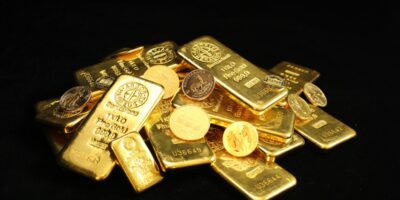Understanding the 1982 D Small Date Penny
The 1982 D small date penny stands out as a coin of interest to numismatists across the world. This particular penny is an important piece in U.S. coinage history due to its distinct variations and transitional period. Understanding its features and significance can add depth to any coin collection.
Background of the 1982 Penny

In 1982, the U.S. Mint made a crucial change in the composition of the penny. Prior to this year, pennies were made primarily of 95% copper. Due to rising copper costs, the Mint decided to switch to a copper-plated zinc composition. The transition saw two types of pennies minted: copper and zinc.
Another significant detail from this year was the difference in the size of the date stamps. Pennies from 1982 come with either a large date or a small date. This created an unusual variety for collectors, as both large and small date pennies exist in both copper and zinc. The Denver Mint (marked by a D on the coin) produced some of these variations.
Identifying the 1982 D Small Date Penny
Identifying the 1982 D small date penny involves understanding the visual distinctions between the large and small date varieties. The small date has a more delicate and narrower appearance. The digits, particularly the “8” and “2,” are thinner compared to the large date version.
One way to tell the difference is the positioning of the date. On the small date, the “2” and “8” are more uniform and even in height, whereas on the large date, the “2” tends to curve more and appear slightly higher in relation to the “8”. Examining these nuances is key to correctly identifying the coin.
Material Composition
The 1982 D small date pennies come in both copper and zinc compositions. To distinguish copper from zinc, weighing the coin is a reliable method. Copper pennies weigh approximately 3.11 grams, while zinc pennies weigh about 2.5 grams. A precise digital scale can assist in this determination.
Experienced collectors often perform the ring test. Copper coins produce a distinctive ringing sound when dropped, as opposed to the duller thud of a zinc coin. However, this test isn’t as reliable as weighing the coin or using advanced tests like those involving specific gravity.
Minting Process and Errors
The minting process in 1982 was complicated due to the transition between compositions. This led to notable minting errors, which can add value and interest for collectors. One such error involves doubled dies, where the design is stamped twice onto the coin, creating a noticeable shadow effect of the numbers or letters.
Other errors include off-center strikes and weak strikes. Given the complexity of the minting process during this year, collectors should closely examine coins for these anomalies. Spotting an error can turn a common penny into a rare find.
Market Value and Collecting
The market value of a 1982 D small date penny varies based on its condition, composition, and potential errors. While most circulated pieces are worth face value, uncirculated or proof versions can fetch higher prices. Copper variants, given their now-scarce material, are particularly sought-after.
Collectors should focus on acquiring coins in good condition, as scratches and wear can significantly reduce value. Grading services can provide an official assessment of a coin’s condition, which is helpful when buying or selling.
Preservation and Storage
Proper storage is crucial to maintaining the quality of any collectible coin. Pennies should be stored in a cool, dry environment to prevent tarnishing and corrosion. Using acid-free holders or coin albums can protect the surface of the coins from environmental damage.
Avoid handling coins directly with bare hands. Oils and dirt from skin can degrade the quality over time. Using cotton gloves or handling coins by their edges can help in preserving their condition for longer periods.
The Collector’s Community
Engaging with other collectors can provide a wealth of knowledge and resources. Numismatic societies and online forums offer platforms for discussion, buying, selling, and trading coins. Connecting with experienced collectors aids in learning and growing one’s own collection.
Attending coin shows and numismatic events provides opportunities for hands-on learning and purchasing. It also offers the chance to see rare coins and gain insight from experts in the field.
Resources for Further Study
- U.S. Mint Archives
- Numismatic Literature and Guides
- Online Coin Catalogs and Databases
- Educational YouTube Channels and Tutorials
Delving deeper into numismatic literature and utilizing available resources can enhance understanding and appreciation of the 1982 D small date penny and other coins. This knowledge is invaluable for making informed decisions in collecting and investing.



